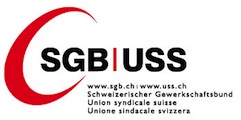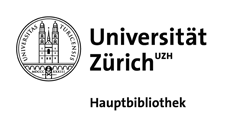Publications des institutions partenaires
Mapping the interconnectedness between EU banks and shadow banking entities
This paper provides a unique snapshot of the exposures of EU banks to shadow banking entities within the global financial system. Drawing on a rich and novel dataset, the paper documents the cross-sector and cross-border linkages and considers which are the most relevant for systemic risk monitoring. From a macroprudential perspective, the identification of potential feedback and...
Institution partenaire
English / 27/03/2017
A Climate stress-test of the financial system
The urgency of estimating the impact of climate risks on the financial system is increasingly recognized among scholars and practitioners. By adopting a network approach to financial dependencies, we look at how climate policy risk might propagate through the financial system. We develop a network-based climate stress-test methodology and apply it to large Euro Area banks in a ‘green...
Institution partenaire
English / 27/03/2017
How Media Coverage of Corporate Social Irresponsibility Increases Financial Risk Media Coverage of Corporate Social Irresponsibility
This article explores the relationship between corporate social irresponsibility (CSI) and financial risk. We posit that media coverage of CSI generates risk by providing conditions that increase the potential for stakeholder sanctions. Through analyzing an international panel of 539 firms during 2008–2013, we find that firms receiving higher CSI coverage face higher financial risk....
Institution partenaire
English / 23/03/2017
Monetáris politika és a bankok hitelkínálata
Növeli-e az alacsony kamatláb a banki hitelkínálatot? Tanulmányunkban egy magyar, vállalati szintű hiteladatbázis panelstruktúrában történő elemzésével keressük a választ a kérdésre. Kashyap–Stein [2000] identifikációs módszerét vállalati és idő fix hatásokkal kiegészítve teszteljük a feltételezést, hogy a kamatok csökkenése különbözőképpen befolyásolja-e az alacsony és a magas...
Institution partenaire
English / 21/03/2017
Immigration and voting for the far right
Does the presence of immigrants in one's neighborhood affect voting for far right-wing parties? We study the case of the Freedom Party of Austria (FPÖ) that, under the leadership of Jörg Haider, increased its vote share from less than 5% in the early 1980s to 27% by the end of the 1990s and continued to attract more than 20% of voters in the 2013 national election. We find that...
Institution partenaire
English / 07/03/2017
Dividends and leverage: How to optimally exploit a non-renewable investment
In this paper we model the situation where a non-renewable investment is given, for instance a resource reservoir, and show how to optimally trade-off between dividends and leverage, in order to maximize a performance indicator for shareholders, up to the bankruptcy time. We then study the way market risk (the volatility of the market price of the resource) impacts the optimal...
Institution partenaire
English / 01/03/2017
Toxic sustainable companies? A critique on the shortcomings of current corporate sustainability ratings and a definition of ‘financial toxicity
Building on critical literature on corporate sustainability, we add a perspective thus far only scarcely addressed: The toxicity of financial products imposing systemic risk. We start with various illustrative cases from the financial sector which have also been discussed colorfully in the media. This sets the stage for toxic assets and practices as revealed after the onset of the...
Institution partenaire
English / 01/03/2017
Bank market power and firm performance
Does market power of banks affect firm performance? To answer this question we examine 25,236 syndicated loan facilities granted between 2000 and 2010 by 296 banks to 9,029 US non-financial firms. Accounting for both observed and unobserved bank and firm heterogeneity, we find that firms that were recently poorly performing obtain loans from banks with more market power. However, in...
Institution partenaire
English / 01/03/2017
Discrete-time option pricing with stochastic liquidity
Classical option pricing theories are usually built on the law of one price, neglecting the impact of market liquidity that may contribute to significant bid-ask spreads. Within the framework of conic finance, we develop a stochastic liquidity model, extending the discrete-time constant liquidity model of Madan (2010). With this extension, we can replicate the term and skew...
Institution partenaire
English / 01/02/2017
Firm industry affiliation and multiple bank relationships
We explain the number of bank relationships a firm maintains by the number of industries it operates in, analyzing 13,570 listed firms in 18 Eastern European countries. We estimate a variety of stylized models including OLS, Tobit and negative binomial that directly accounts at once for the number of bank relationships. Controlling for many firm characteristics and accounting for all...
Institution partenaire
English / 01/02/2017
The Liquidity Coverage Ratio and Security Prices
What is the added value of a security which qualifies as a “high-quality liquid asset” (HQLA) under the Basel III “Liquidity Coverage Ratio” (LCR)? In this paper, we quantify the added value in terms of yield changes and, as suggested by Stein (2013), call it “HQLA premium”. To do so, we exploit the introduction of the LCR in Switzerland as a unique quasi-natural experiment and we...
Institution partenaire
English / 01/02/2017
Compressing over-the-counter markets
In this paper, we show both theoretically and empirically that the size of over-the-counter (OTC) markets can be reduced without affecting individual net positions. First, we find that the networked nature of these markets generates an excess of notional obligations between the aggregate gross amount and the minimum amount required to satisfy each individual net position. Second, we...
Institution partenaire
English / 08/01/2017
Brexit et droit public en matière d'art et de biens culturels
Institution partenaire
Français / 01/01/2017
Can exclusive licensees sue for infringement of licensed IP rights?: a case study confirming the need to create global IP licensing rules
Institution partenaire
English / 01/01/2017
Contracts on Digital Content in Europe: Balancing between Author-Protective Copyright Policies and Consumer Policies
Institution partenaire
English / 01/01/2017
Pathways towards instability in financial networks
Following the financial crisis of 2007–2008, a deep analogy between the origins of instability in financial systems and complex ecosystems has been pointed out: in both cases, topological features of network structures influence how easily distress can spread within the system. However, in financial network models, the details of how financial institutions interact typically play a...
Institution partenaire
English / 01/01/2017
Pagine
Le portail de l'information économique suisse
© 2016 Infonet Economy












